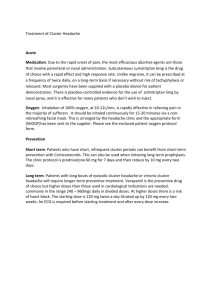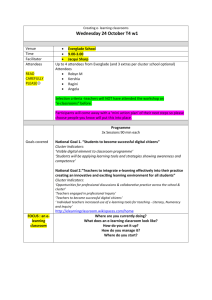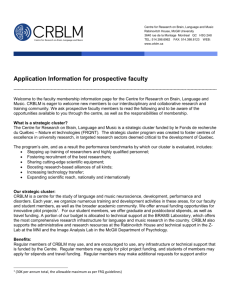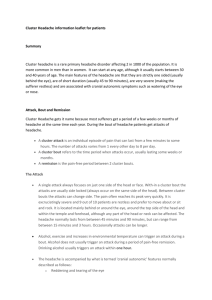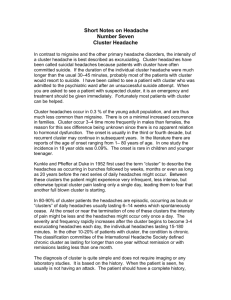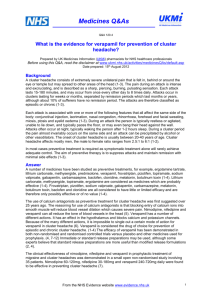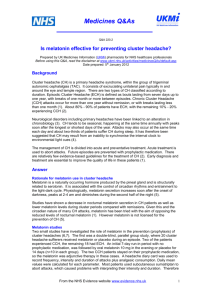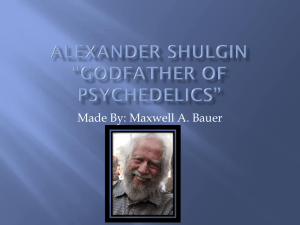Cluster Headache & Citizen Science
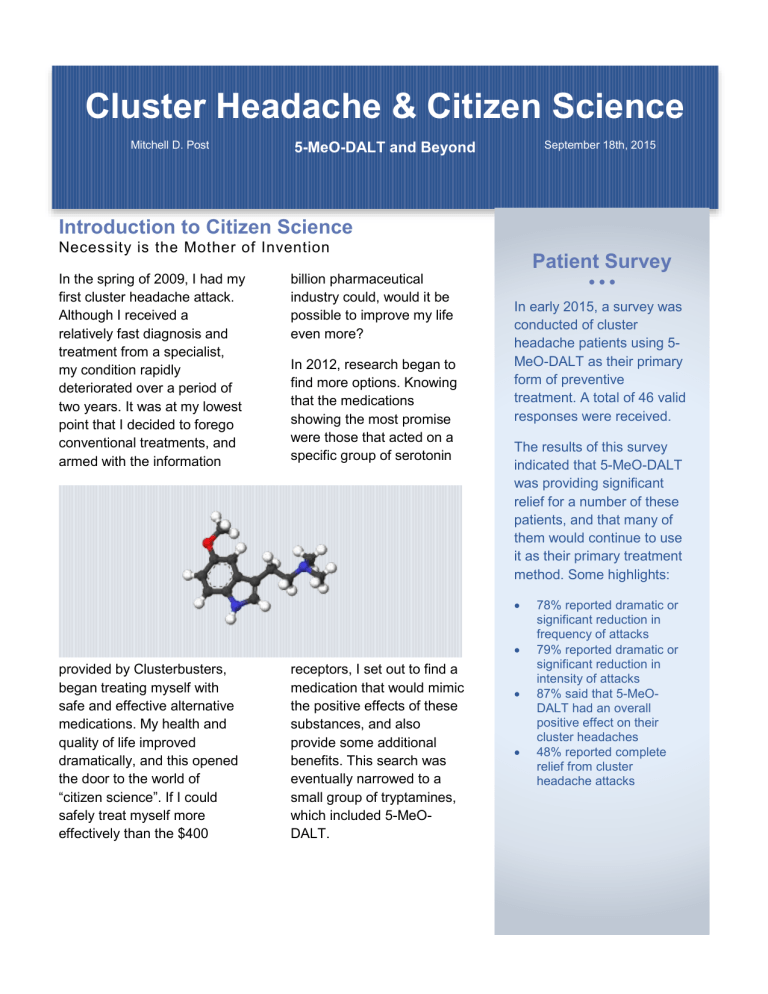
Cluster Headache & Citizen Science
Mitchell D. Post
5-MeO-DALT and Beyond
September 18th, 2015
Introduction to Citizen Science
Necessity is the Mother of Invention
In the spring of 2009, I had my first cluster headache attack.
Although I received a relatively fast diagnosis and treatment from a specialist, my condition rapidly deteriorated over a period of two years. It was at my lowest point that I decided to forego conventional treatments, and armed with the information billion pharmaceutical industry could, would it be possible to improve my life even more?
In 2012, research began to find more options. Knowing that the medications showing the most promise were those that acted on a specific group of serotonin provided by Clusterbusters, began treating myself with safe and effective alternative medications. My health and quality of life improved dramatically, and this opened the door to the world of
“citizen science”. If I could safely treat myself more effectively than the $400 receptors, I set out to find a medication that would mimic the positive effects of these substances, and also provide some additional benefits. This search was eventually narrowed to a small group of tryptamines, which included 5-MeO-
DALT.
Patient Survey
In early 2015, a survey was conducted of cluster headache patients using 5-
MeO-DALT as their primary form of preventive treatment. A total of 46 valid responses were received.
The results of this survey indicated that 5-MeO-DALT was providing significant relief for a number of these patients, and that many of them would continue to use it as their primary treatment method. Some highlights:
78% reported dramatic or significant reduction in frequency of attacks
79% reported dramatic or significant reduction in intensity of attacks
87% said that 5-MeO-
DALT had an overall positive effect on their cluster headaches
48% reported complete relief from cluster headache attacks
5-MeO-DALT and Beyond
5-MeO-DALT is a synthetic tryptamine originally formulated by Alexander
Shulgin in 2004. It was created as a recreational drug, but never found favor among the psychedelic community. It was first proposed for cluster headache treatment because of its simplicity: It is a simple chemical, with very mild side effects, orally bioavailable, and easy to obtain for the general public. The biggest question was whether it would relieve the pain of cluster headaches. In late 2013, a small trial was done by two cluster headache patients, and the results were positive.
5-MeO-DALT clearly had the potential to stop cluster headache attacks.
Without any form of clinical background, deciding what to do with 5-MeO-DALT was difficult. Ultimately, the decision was made to release all of the information to the cluster headache patient community, in the hope that some patients would find relief. The survey conducted at the beginning of 2015 indicated that several have.
5-MeO-DALT has given a new option to cluster headache patients who are comfortable with self-treatment. But most importantly, it demonstrates the power of citizen science.
Patients themselves are now making scientific advances in the treatment of this painful disorder, and the speed of scientific advancement should increase dramatically!
“If it bleeds, we can kill it”
-Dutch (Predator, 1987)
Recommended Reading and Contact Information
Books and Video
As a non-scientist, these resources have been valuable in increasing my understanding of neurological processes and the human brain:
When the Body Says No , Dr. Gabor Maté
This book was my introduction into the world of idiopathic diseases and the stress connection.
The Tale of the Dueling Neurosurgeons , Sam Kean
Using entertaining (and sometimes gruesome) stories of brain injury and recovery, this book will give you a working knowledge of the brain and how it functions (or in some cases, doesn’t function.)
The Brain that Changes Itself and The Brain’s Way of Healing , Dr. Norman Doidge
These books give new insight into the brain as “plastic”, focusing on the brain’s capacity to change and heal.
“How Great Leaders Inspire Action” , Simon Sinek (TED Talk or YouTube)
This video has nothing to do with cluster headaches, but I believe it is important for any citizen scientist to be grounded in their “why”, the reason they do what they do. You will be inspired to get real results when you know your own “why”.
For more information, links to studies and surveys, and for contact details:
